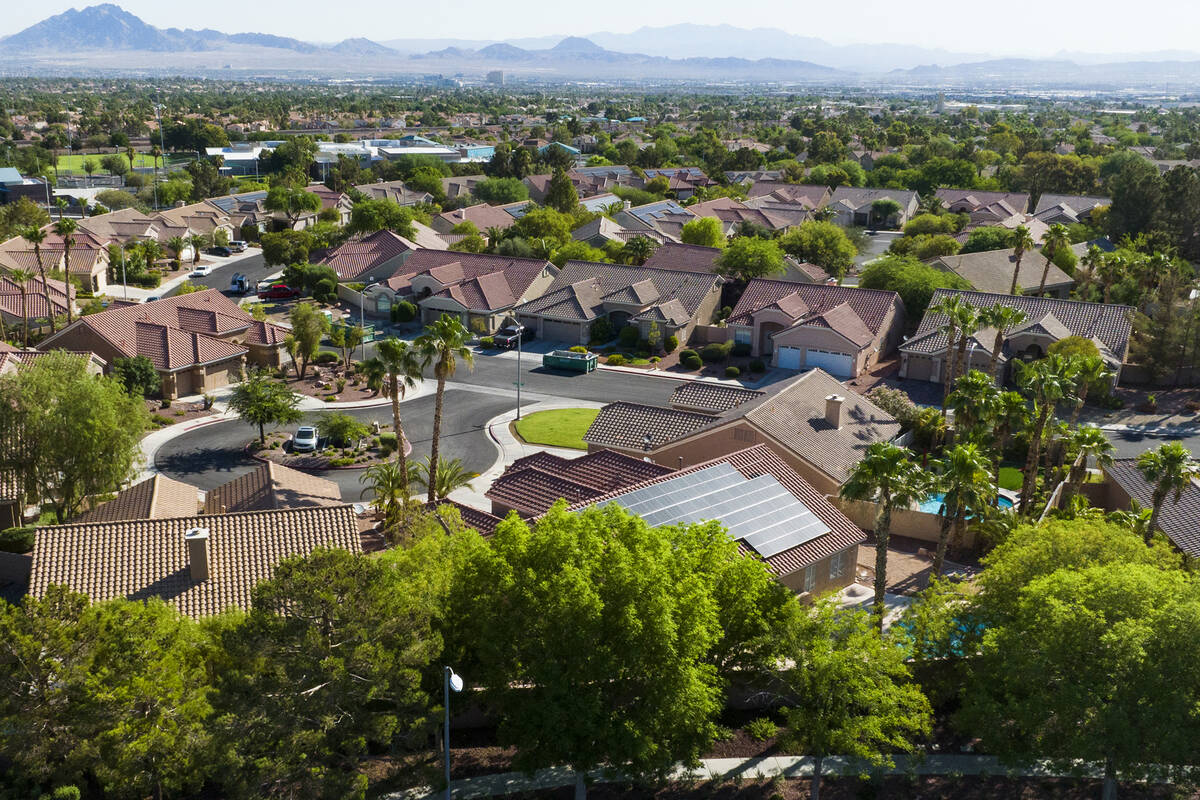Las Vegas housing inventory making comeback, group says
Housing inventory appears to be making a comeback in the Las Vegas Valley after a dismal first quarter, according to statistics from the Las Vegas Realtors.
Inventory was down more than 20 percent in the first quarter of 2024 compared with the previous year, however LVR President Merri Perry said they are seeing a rebound in the local market.
“But since then, our inventory has been increasing,” said Perry in an email response to the Las Vegas Review-Journal. “Through the end of May, LVR statistics show a 6 percent increase in the number of homes available for sale and a 43 percent increase in the number of condos and townhomes available for sale compared to the same time last year.”
Perry added the valley’s problems with housing and real estate are also America’s problems.
“We continue to have a very tight housing supply here in Southern Nevada. The same is true across most of the country.”
A lack of housing inventory has driven up prices nationally to record highs, according to the latest report from Redfin, largely due to supply constraints brought on by ultra-low interest and refinancing rates for homes during the pandemic. Mortgage rates remain above 7 percent which is further dampening the resale market as many buyers continue to wait for lower interest rates.
Lack of available land for houses
A Construction Coverage study that looked at first quarter statistics regarding inventory across the country and by state found the same results, that there was a significant drop in housing stock.
Michael Stromberg, the lead data analyst and chief technology officer for Construction Coverage, said one of the biggest factors in Nevada in particular is a lack of land for development due to the fact that the federal government owns 88 percent of the land in Clark County.
“Several factors have contributed to the recent housing inventory crunch in Las Vegas,’ he said in an email response to the Review-Journal. “Homeowners are increasingly hesitant to sell due to the prohibitive interest rates, making it less appealing to move or upgrade. Additionally, a shortage of construction workers and inflated construction costs have hindered new housing developments.”
Las Vegas finds itself amidst a housing crisis as stakeholders on both the residential and commercial side have called for the Southern Nevada District Office of the Bureau of Land Management to release more land, and put more land up for auction in a more timely manner.
Stromberg said the issues plaguing the valley are the same ones plaguing many cities across the nation when it comes to housing.
“On top of all of that, the area is also experiencing persistent demand-side pressure,” he said. “With growing economic opportunities and a lower cost of living than some other major cities, the metro has been attracting high-income, college-educated professionals more than ever.”
Construction Coverage estimates the country is short somewhere between 4 and 7 million homes, and this has been a problem that has been growing for decades.
“But the current housing shortage,” read the report, “can trace its beginnings to long before the COVID-19 pandemic. In the 10 years following the Great Recession, the United States constructed fewer new homes than in any other decade since the 1960s. Simply put, the nation has not built a sufficient number of homes — particularly in certain areas — to meet the demands of natural population growth, immigration, urbanization, and a growing number of retirees opting to age in place.”
Contact Patrick Blennerhassett at pblennerhassett@reviewjournal.com.



















